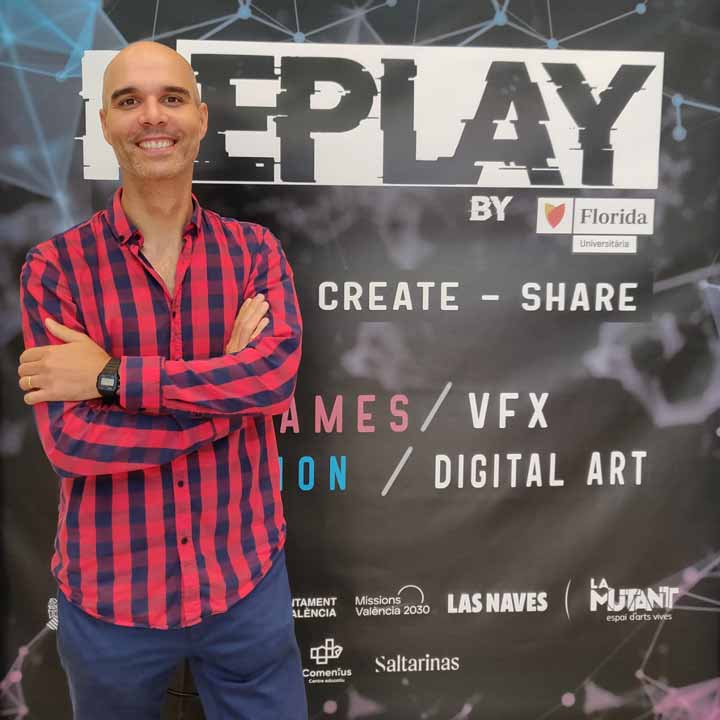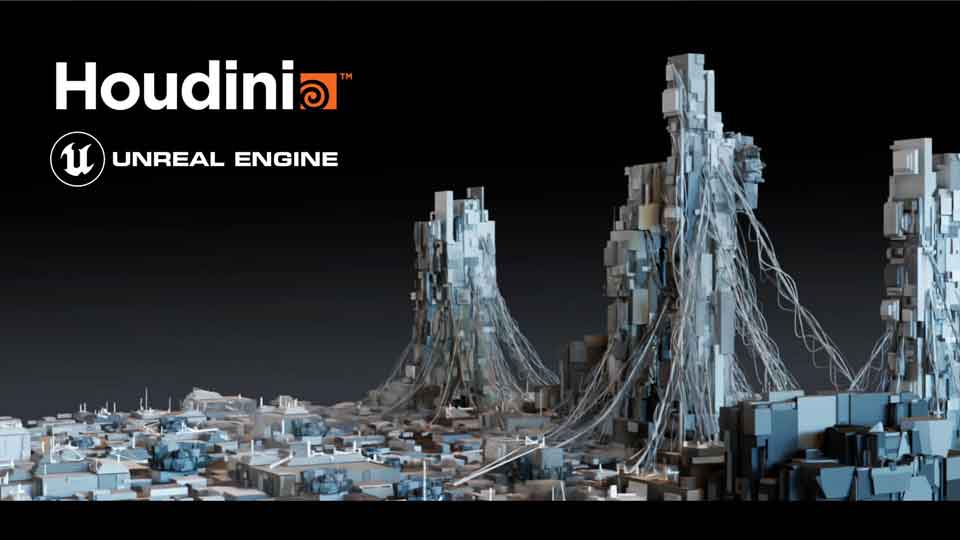
Houdini for Videogames Workshop: Understanding procedurality
Adolfo Reveron

Houdini - UE5 workshop
24th-25th May 2023
24th-25th May 2023
Empty space, drag to resize
We had the pleasure to participate in the event SOYREPLAY (Valencia) last May 24th, 25th. Within a couple of exciting workshops, we explained why Houdini plays a key role in game production.
When preparing the content for the workshop, I thought of showing wonderful Houdini tools in action, showcasing how very tedious and complex processes became quick, flexible and painless with the assistance of these tools.
However, I found myself in the need of simplifying the content over and over. I shared the draft to a couple of techartists and experienced 3D artists beforehand and they kept saying:
'Adolfo, make it simpler, start from the very beginning. They won't follow what you are saying.'
They were absolutely right: when talking to newcomers to procedural workflows before the workshops, I felt astonished by the lack of knowledge regarding how art content creation can be boosted with procedural approaches.
However, I found myself in the need of simplifying the content over and over. I shared the draft to a couple of techartists and experienced 3D artists beforehand and they kept saying:
'Adolfo, make it simpler, start from the very beginning. They won't follow what you are saying.'
They were absolutely right: when talking to newcomers to procedural workflows before the workshops, I felt astonished by the lack of knowledge regarding how art content creation can be boosted with procedural approaches.
A huge part of the 3D community is still grown up professionally with the idea of linear and destructive workflows. Luckily, recent versions of software like Blender prove that procedural pipelines are not an alien thing, something weird exclusive from Houdini. Instead, they are the future, now more than ever, in a revolutionary period, plenty of machine learning and AI generation stuff.
There are plenty of concepts that struggle to hook in 3D artist's minds, even the very basic pillars. Hence, I started with explaining that, when creating art for videogames, almost every action can be understood as an input (or initial state), a process (like extruding an edge) and a final output (extruded geometry).
If you are able to think of art creation in this simple terms, you're good to start your journey as next-gen 3D artist or technical artist. Houdini tools are just a collection of simple actions in most cases, however they are just stacked in a meaningful way, providing a complex process once nicely wrapped.
Think of these small actions as if they were ants. They are tiny hardworking insects that, as individuals, they know how to do a couple of simple actions. However, all these simple (but well-known and optimized) operations pile up amazingly so they end up building huge structures like anthills.
Houdini tools are exactly this: just a collection of small actions put together, that you can reuse over and over.
That is procedurality.
This settles the required mindset to understand further 'actions' like, transferring an attribute, exporting a given geo to disk, creating a sci-fi space ship generator or importing your art automatically into the game engine of your choice, like Unreal 5.
Keep in mind that technical requirements for creating 3D art have been around since the very beginning (unwrapping UVs, texture exporting, geometry optimization, etc). So, in my opinion, the technical side of creating 3D Art will be around for a while, even with brand new revolutionary AI assistance at our reach. Maybe in a near future, you won't need to optimize your geo or unwrap your UVs by hand....but you'll need to know how to tackle with procedural/AI assisted workflows. We´ll leave behind some 'old' technical operations and will embrace a set of 'new' technical operations instead.
There are plenty of concepts that struggle to hook in 3D artist's minds, even the very basic pillars. Hence, I started with explaining that, when creating art for videogames, almost every action can be understood as an input (or initial state), a process (like extruding an edge) and a final output (extruded geometry).
If you are able to think of art creation in this simple terms, you're good to start your journey as next-gen 3D artist or technical artist. Houdini tools are just a collection of simple actions in most cases, however they are just stacked in a meaningful way, providing a complex process once nicely wrapped.
Think of these small actions as if they were ants. They are tiny hardworking insects that, as individuals, they know how to do a couple of simple actions. However, all these simple (but well-known and optimized) operations pile up amazingly so they end up building huge structures like anthills.
Houdini tools are exactly this: just a collection of small actions put together, that you can reuse over and over.
That is procedurality.
This settles the required mindset to understand further 'actions' like, transferring an attribute, exporting a given geo to disk, creating a sci-fi space ship generator or importing your art automatically into the game engine of your choice, like Unreal 5.
Keep in mind that technical requirements for creating 3D art have been around since the very beginning (unwrapping UVs, texture exporting, geometry optimization, etc). So, in my opinion, the technical side of creating 3D Art will be around for a while, even with brand new revolutionary AI assistance at our reach. Maybe in a near future, you won't need to optimize your geo or unwrap your UVs by hand....but you'll need to know how to tackle with procedural/AI assisted workflows. We´ll leave behind some 'old' technical operations and will embrace a set of 'new' technical operations instead.
Crea un Portfolio Diferenciador
para conseguir un empleo 3D
Crea un Portfolio Diferenciador
para conseguir un empleo 3D
Te ayudo a dejar de perder tu tiempo en un Portfolio que no lleva a nada
con un programa que te capacita de verdad y te lleva a entrevistas
Te ayudo a dejar de perder tu tiempo en un Portfolio que no lleva a nada
con un programa que te capacita de verdad y te lleva a entrevistas
Empty space, drag to resize
________________________________________________________________________________________________________________
©TECHART WORLDS 2025 - Todos los derechos reservados.
We give away FREE lessons for every course
REGISTRATION CLOSED
NO AVAILABLE SEATS
Subscribe to get notified for next call
SOLICITA INFORMACIÓN
Escríbenos un mail o llámanos,
indicando que estás interesado/a en:
'Máster de TechArt con Houdini para Videojuegos'
aliciaverduch@floridauniversitaria.com
Alicia Verduch (Atención al Estudiante)
662 957 196
